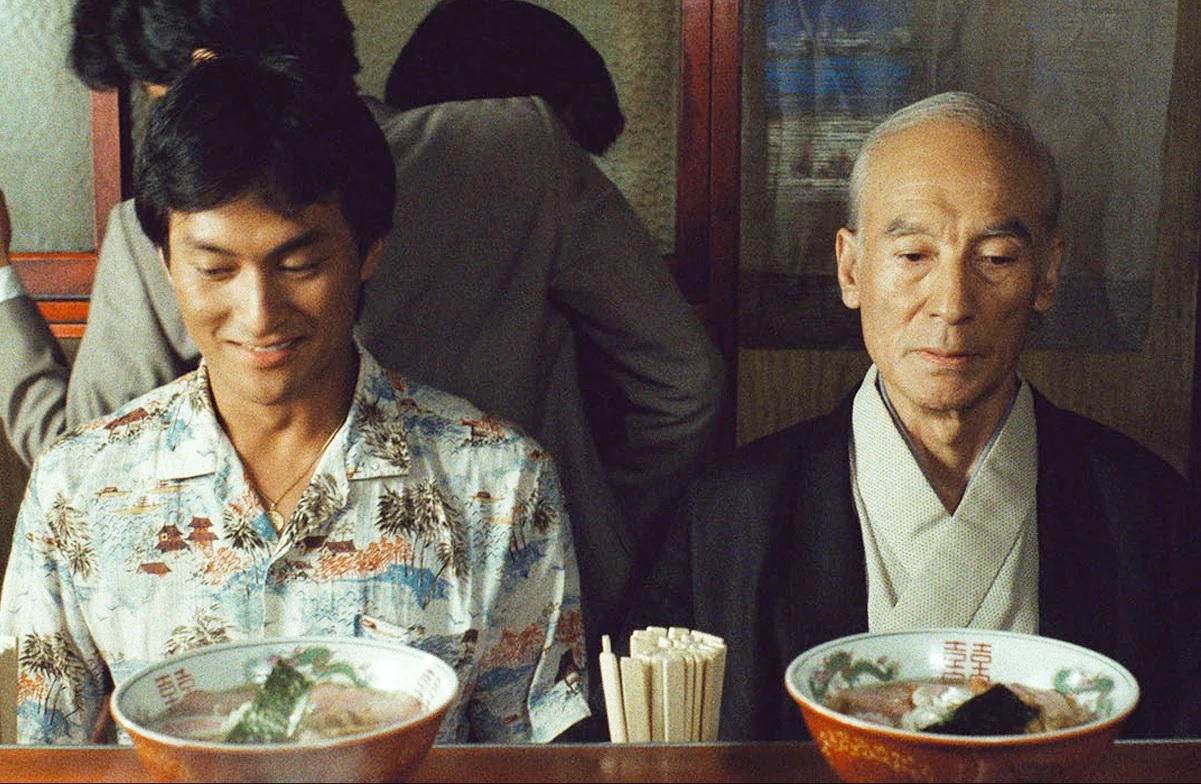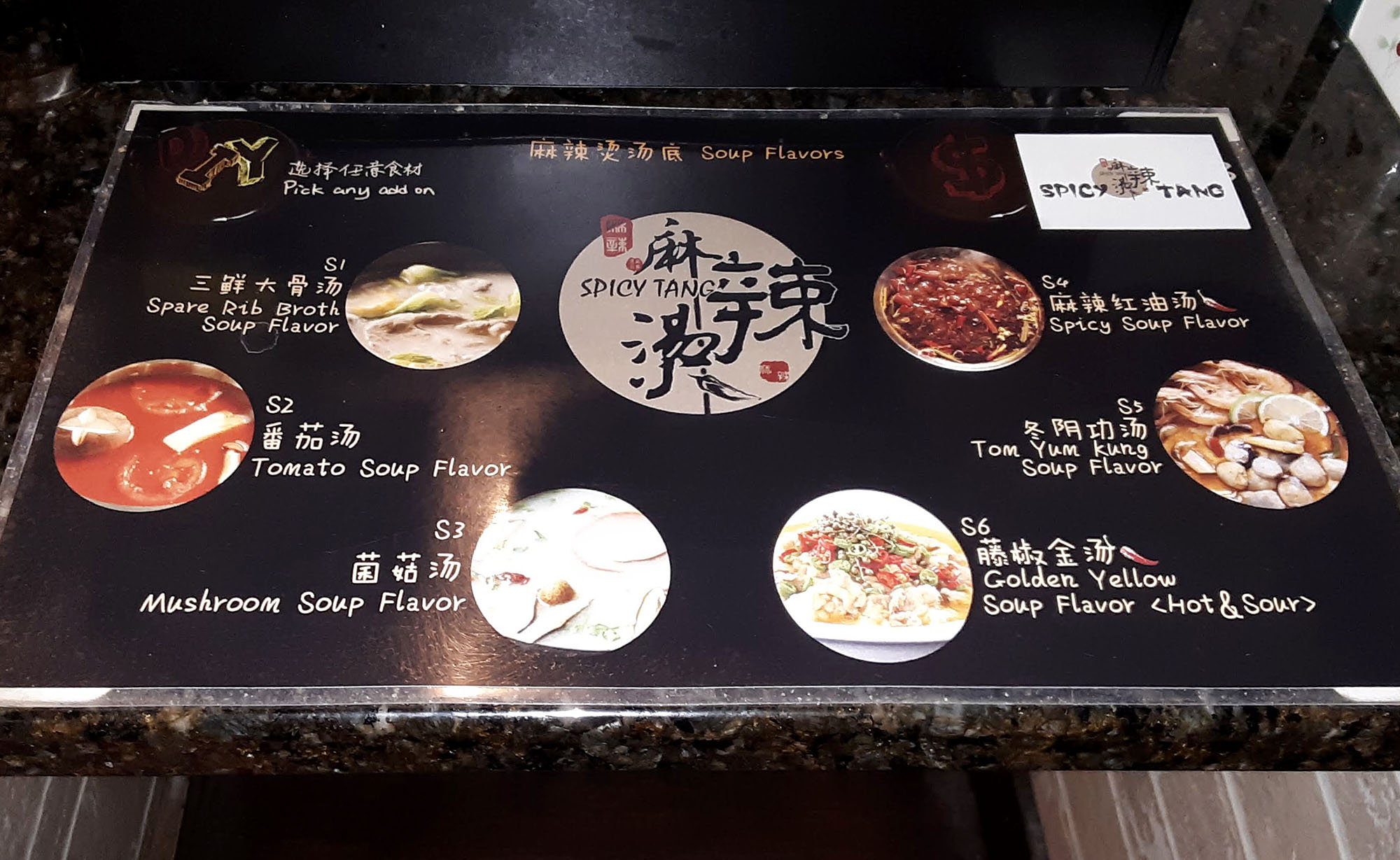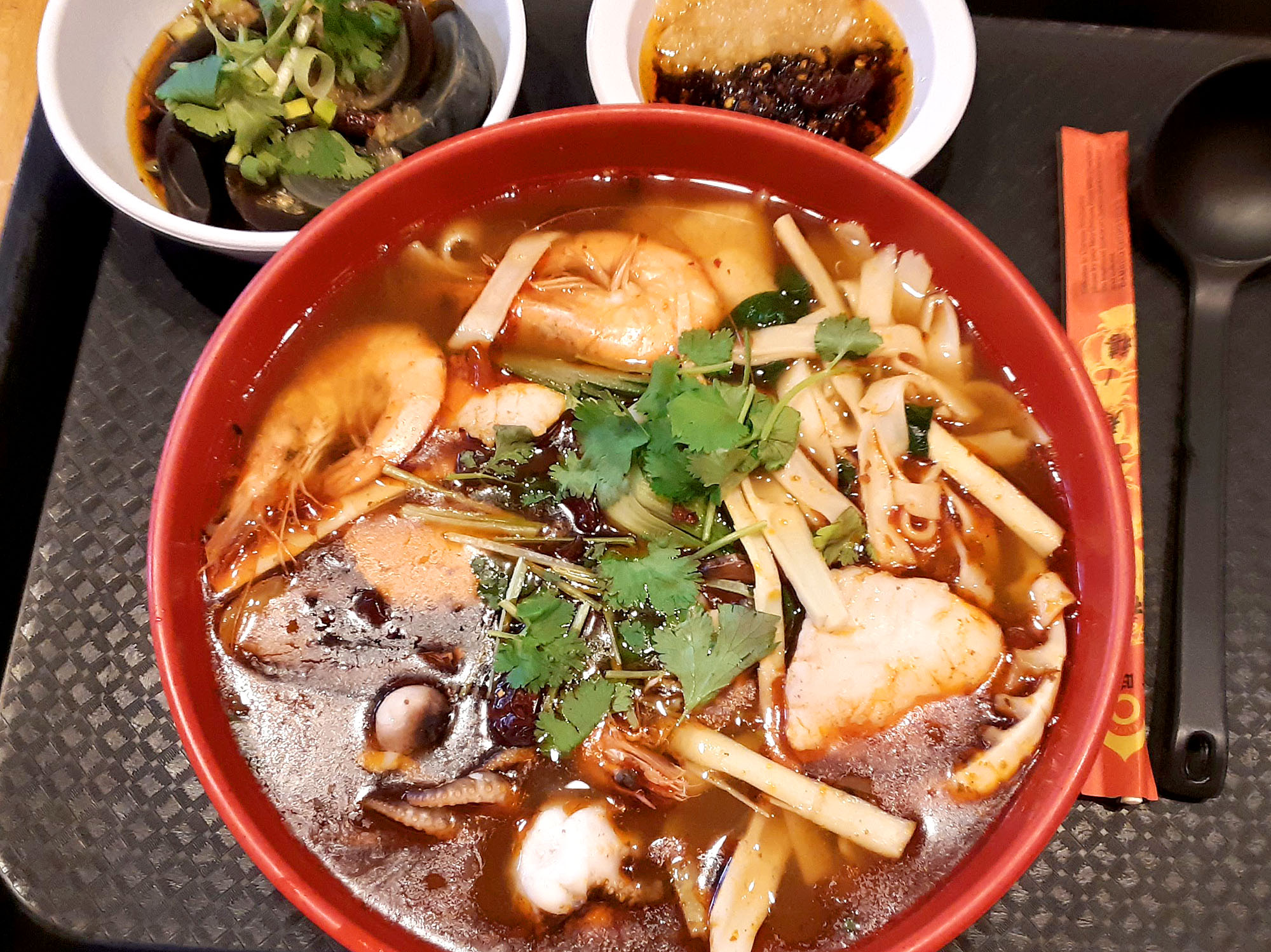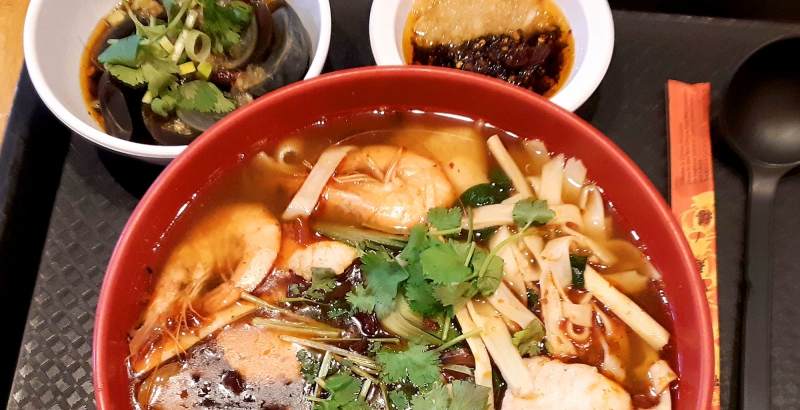Movies about food inspire me. They give me insights to other cultures, motivate me to get creative with dinner, and teach me all kinds of things about both food and life. The ideal movie to prep for a Japanese dinner? Why Tampopo, of course, a.k.a. “the first Japanese noodle Western.”
Just like a Sergio Leone Spaghetti Western, Tampopo is a foreign film reflecting American culture back to us, and it’s quite enlightening. It’s also a Jaques Tati-inspired sitcom: a very meta vignette movie made up of multiple sequences interconnected by poetic threads that take a deep dive into the Japanese mind. Like Lost in Translation, this arthouse hit from 1985 is required viewing for those interested in learning about Japanese culture.
Tampopo is director Jûzô Itami’s masterwork. He only made ten films before his tragic suicide in 1997, and every one of his films uses piercing satire to criticize Japan’s culture. In fact, Yakuza gang members slashed his face after he went “too far” making fun of their macho culture.
Tampopo is also an instructional film. The film gives very specific instructions on how to behave in Japan. The movie answers difficult etiquette questions like, when eating ramen, does one start with the broth or the noodles? Spoiler: neither. “First, observe the whole bowl,” the master tells the student. “Appreciate its gestalt. Savor the aromas, the jewels of fat glittering on the surface, shinachiku roots shining, seaweed slowly sinking, spring onions floating. Concentrate on the three pork slices — they play the key role — but stay modestly hidden. First, caress the surface with the chopstick tips to express affection, then poke the pork, and gently pick it up and dip it into the soup on the right of the bowl. What’s important here is to apologize to the pork by saying, ‘See you soon.’”

Photo by Janus Films.
Earnest passion or parody? I think both. Some people take their food very seriously — and for good reason. After a movie like this, it would be a sin not to have a big steaming bowl of ramen for dinner. I could make it myself, but there are a lot of moving parts to making ramen, and it could get complicated. Champaign-Urbana has several excellent ramen options including Oozu, Sakanaya, and Sakura, but I wanted to experiment a little.
We can have the best of both worlds: exactly the noodle soup we want and eat it too, all without going shopping or cooking. We had fond memories of the old Spicy Tang when they were still on Green Street years ago, but we hadn’t visited their new Sixth Street location yet.

Photo by Paul Young.
Spicy Tang allows diners to choose whatever ingredients they want in their soup. I remembered a Mongolian barbeque-style buffet counter where diners pointed to what looked good, and the chef would cook it for you. That was the same, but the ingredient choices have vastly expanded at the new location. In fact, it appeared that they had at least twice as many choices — and their new dining room was now bigger and classier which made for a much comfier environment for good eating.
When it comes to food, my philosophy has always been the more the merrier. By more, I don’t mean just bigger portions (which can’t hurt). What perks me up is more variety, more choices, more exotic ingredients, more opportunity to try something new. In my opinion, ethnic food is culture for the belly, and there’s no such thing as too much culture.
As I surveyed the ingredient options for my soup, I was almost overwhelmed. Just because I’m weird, I immediately spotted duck blood, tripe, preserved duck eggs, and octopus. That put me in a good mood because these are rare ingredients that you don’t spot outside of big city Chinatowns, and with those, my soup could be something really special.

Photo by Paul Young.
Most of the proteins were on the left, and all vegetarian options were on the right. If you’re vegetarian (or even vegan), you can have a wonderful meal at Spicy Tang with tofu, lotus root, daikon radish, three kinds of mushrooms (including shiitake), fresh bamboo shoots, fresh spinach, and much more. If you’re not a vegetarian, you can indulge in chicken, beef, pork, pork belly, sausage, shrimp, fish balls, crabstick, and more. Now that’s what I call variety.

Photo by Paul Young.
We grabbed our bowls and a pair of tongs and started to fill our bowls. Here is where having some restraint might help. If you put on your chef’s hat, you will begin to see the buffet line in a different light. Will sausage and octopus really go together? Will lotus root, daikon radish, and mushrooms look appetizing in the same bowl? My partner chose to go towards the sea with shrimp, octopus, and fish balls, and I went in the opposite direction with tripe, sausage, and duck’s blood. This arrangement worked out great because later we got to switch bowls and try each other’s creations.
For the vegetable, she went for shitaake mushrooms, lotus root, and bamboo shoots; I went for the tree ear mushrooms, tofu, and spinach. Next, the kind of noodles we wanted: she had Guilin-style fat rice noodles, and I went for the Hong Kong-style egg noodles. With very full bowls in our hands, we went to the counter to pay, but there were still more decisions to be made.

Photo by Paul Young.
The cashier pointed to a laminated chart with pictures and asked us to choose a broth. This was not a chicken or beef question because we were given six choices: spare rib broth, tomato, mushroom, golden yellow (hot and sour), tom yum kung, and just plain spicy. All of them looked good, but after some more discussion, we narrowed down our choices to two: mushroom broth with the seafood ingredients and spare rib broth with the meats.

Photo by Paul Young.
But wait, there’s more. We were curious about appetizers, and since the menu board was not in English, we had to ask. She pointed to a touchscreen monitor with the English menu. Diners can just tap the screen a few times, pay, and minutes later, food is on the table. Now that’s pretty advanced for a mom-and-pop shop.

Photo by Paul Young.
Given the choices of appetizers available, we asked for pig ears and the preserved eggs. Unfortunately they were out of pig ears that day, so we substituted spicy beef instead. All appetizers are $9.99 each.

Photo by Paul Young.
Spicy Tang doesn’t have a liquor license (and we weren’t interested in soda pop), so we opted for water to drink. After paying, the cashier gave us a buzzer. Within a few minutes of finding our table and sitting down, our food arrived. We stared down at our creations and noticed that the chef had added a nice little touch: a little garnish of raw scallions and chopped cilantro for that extra eye-appeal.
The server stopped us before our first bite and pointed to the condiments station. Our soups looked damn good, so I wondered if we needed to add anything else? One glance at their offering, and the answer was obvious: “More please!”

Photo by Paul Young.
We helped ourselves to a little spicy red pepper crisp. She added fresh garlic, and I added vinegared parsley sauce.
Because we just watched Tampopo, we learned the proper way to enjoy our noodle soups. First, we contemplated the meal in front of us and simply enjoyed the wonderful aroma emanating from our bowls. Next, we used our chopsticks to examine the ingredients on the top of the bowl, carefully picking up a few morsels, and giving the soup a light swirl. We dug in looking for noodles, picked up a few strands, loudly slurped them right into our mouths, closed our eyes, and enjoyed the texture of the broth-soaked goodness as we chewed our first bite. We were in noodle heaven.

Photo by Paul Young.
She chose a baby octopus for her first bite and said it was more tender than the more mature mama octopus. I took a bite and agreed, smaller tentacles meant less chewing. My tongue tingled a little bit as it always does when eating seafood as memories of ocean salt filled my senses. Her broth was mild but flavorful. This is what we came for, this is why every major cuisine in the world has at least one style of noodle soup in their tradition.
The preserved eggs appetizer was served in a white bowl (top left in photo). The preserved eggs, also known as century eggs, had a strong, pungent umami flavor which I thoroughly enjoyed. Since they looked like really old rotten eggs, there was also a thrill in every bite.

Photo by Paul Young.
My first bite was pork belly. The pork belly was juicy, tender, and fatty — and soaked with the wonderfully fragrant pork broth. Pork belly (also known as uncured bacon) is prized in Asian cuisine for the fat (more fat means more calories and more energy for hard labor; this is peasant food after all). I dug in and grabbed my first random mouthful of stuff and — as luck would have it — I got some pudding-like duck’s blood and some semi-crisp tree ear mushrooms at the same time which was a delightful contrast of textures. The next bite was a lovely serendipitous combination: broth-soaked wilted spinach and a slice of salty-sweet Chinese sausage. My broth was potent and spicy.
Once our bowls were half-empty, we picked them up, lifted them right up to our lips, and used our chopsticks as shovels to get even more of that yummy goodness into our mouths. Were there slurping noises? You bet. Were we embarrassed? Not one bit since the other diners around were mostly Asians, and we all understood that the louder the slurping, the more festive the feast.
We were almost done with our soups before we realized that we also had appetizers on our trays. I had the spicy beef appetizer on my tray (top left). The spicy beef was a bit tough to chew, but after dipping a piece in my soup broth, I started to appreciate its texture more.
In Tampopo, we learned that ramen chefs judge the success of their creations based on whether the customer drained their bowl or not. That day, we did not — but that wasn’t the chef’s fault. We were simply too full. Fortunately, no one saw the little bit of broth left over in our bowls.
The meal was charged by weight at a price of $10.99 per pound. If you want to save some money, consider the weight of what you are adding to your bowl. For instance, spinach is super light, but eggs are quite heavy. The ingredients weren’t labeled, so if you’re shy, you won’t be able to expand your horizons. If you want to experiment a little, just ask the cashier, and she’ll answer any questions you might have. Better yet, taste first, ask later; you might be pleasantly surprised. The condiments weren’t labeled either, so you might have to ask for a quick overview. The menu board was not in English, and I’m sure there were menu items up there that I would like to try someday, but today was noodle soup day.
If you go to Spicy Tang’s Doordash menu page, there is a nice well-rounded Chinese delivery menu that might give a good idea of what might be on that “secret” menu board.
The total cost of our meal? $75 including tax. We agreed that this would have been a fair price for an excellent meal in a four-star Chinatown restaurant in Chicago, but hey, we didn’t have to drive four hours roundtrip to get it. Maybe we didn’t need to order the appetizers, but they sure made for a nice snack the next day.
The bottom line about Spicy Tang: high quality ingredients, incredible variety, wonderful flavors, great taste, really fast and friendly service, a nice environment, and zero complaints. For us, that’s worth every penny.
Tampopo is currently streaming by subscription on HBO Max and The Criterion Channel, or for free on Kanopy (for Champaign-Urbana public library card holders and people with access to the Parkland or U of I libraries).
Spicy Tang
607 S 6th St
Champaign
T-Su 11:30 a.m. to 9 p.m.
When he is not watching one film a day, Paul Young likes to travel the world seeking good things to eat. So far, he has eaten his way through 22 countries, and he loves to share his culinary discoveries with cooking classes.








